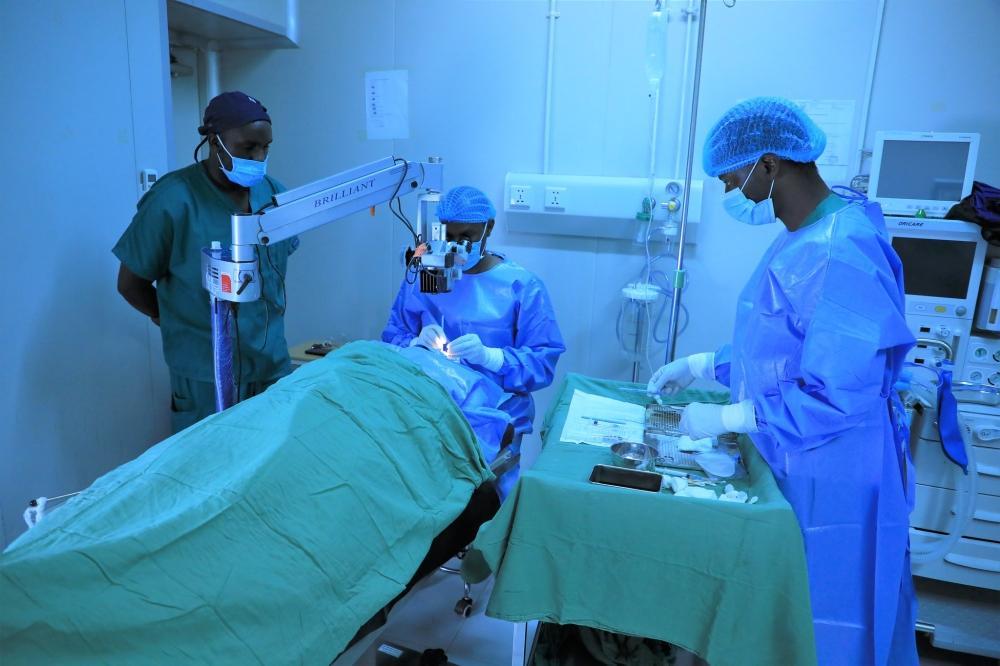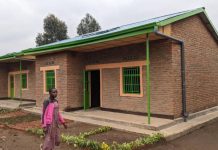Africa-Press – Rwanda. The government is set to implement a five-year health sector strategic plan which seeks to increase healthcare workers, reduce maternal, and child mortality, according to the Minister of Health Dr. Sabin Nsanzimana.
Dr. Nsanzimana said this while delivering to senators a presentation on health policy implementation and actions meant for improving primary healthcare.
He said that the strategy will be launched on February 1.
The Health Sector Strategic Plan (HSSP 5), which is the fifth edition, is a blueprint aimed at advancing the Rwanda health sector’s progress toward universal health coverage by 2030, according to the information from the Ministry of Health.
It is in line with the second phase of the National Strategy for Transformation (NST2), with a focus on helping the country achieve its commitment to improving healthcare with a focus on strengthening healthcare systems.
Here are key targets and priorities of the plan
Improvement in healthcare workers
Under the blueprint, Rwanda seeks to increase the ratio of active licenced doctors from 18 per 100,000 people in 2024 to 32 per 100,000 patients in 2029, according to data from the Ministry of Health.
The ratio of active licenced nurses is also projected to rise from 97.4 per 100,000 patients in 2024 to 171 per 100,000 patients in 2029, while the ratio of active licenced midwives is forecast to increase from 58.1 per 100,000 people in 2024 to 185 per 100,000 people in 2029.
Reproductive, maternal, and child health
Rwanda aims to significantly reduce maternal mortality rates, which currently stand at 105 per 100,000 live births, to 60 by 2029. Additionally, the country plans to lower the neonatal mortality rate from 11 deaths per 1,000 live births in 2024 to 8 per 1,000 live births by 2029.
The plan is to also reduce death rates of children under five years, from 45 per 1,000 live births in 2024 to 20 in 2029.
The government also seeks to lower teenage pregnancy rate to 15 per 1,000 teens, from 29 in 2024, and prevalence of stunting among under-five children to 15 per cent from 33 per cent., which is the baseline.
Infrastructure development
Under infrastructure development, the population served by one ambulance is expected to reduce from 53,000 to 20,000 as a result of increased availability of such vehicles.
The plan also targets to increase the rate of fully equipped health facilities from 65 per cent to 85 per cent, and health facilities with international accreditation from two to five, among other goals.
The key pillars
Health workforce
This pillar aims to build a well-trained, supported, and optimally deployed health workforce through education, empowerment, and enhanced job satisfaction, according to the Ministry of Health.
Nsanzimana said that it is also in line with the country’s programme to increase by fourfold the number of healthcare workers in four years (up to 2028), which the country started implementing.
“This is intended to ensure that we do not only have buildings and equipment, but also capable medical personnel, enough in terms of number, but also enhance the quality [of health care],” he said, citing minimally invasive surgery, which uses approaches to operate with less damage to the body than open surgery.
Health infrastructure modernisation
Under this pillar, Rwanda seeks to transform health services by establishing fully equipped, safe, user-friendly, climate-resilient, and accredited health facilities that embrace innovation, citing maternity and neonatology infrastructure.
Improving the quality of health care
Nsanzimana said it seeks to ensure effective, equitable, person-centred health services through a primary healthcare approach, empowering communities, and integrating care from prevention to palliation.
Health security and public health emergency
The goal is to detect and respond to emergencies, build resilience, manage disasters, address climate impacts, and combat antimicrobial resistance.
Research, innovation, and digitalisation
The aim is to advance health technology and innovations through research, regulation, digitalisation, and local biomanufacturing for sustainable, high-quality healthcare solutions.
Nsanzimana said that technology can help fast-tract health care provision, citing advanced equipment for disease diagnostic.
“For instance, if we only have 15 radiologists in Rwanda, research shows that with the use of artificial intelligence, one radiologist can interpret medical images as many as 100 times with the use of the technology than without it,” he said.
For More News And Analysis About Rwanda Follow Africa-Press






